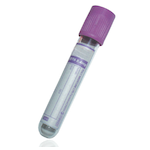Suitable Specimen Types
- EDTA Whole Blood
Sample Processing in Laboratory
Place in Trace Element rack in Send Away Fridge.Sample Preparation
None
Turnaround Time
10 DaysSample Stability
4oC. Do not separate plasma
Manganese (Whole Blood)
General Information
Manganese is an essential trace element which is widely distributed in the environment. It is used as a component of steels and a variety of other metal alloys, and in the battery, glass and ceramic industries. Concentrations in body tissues are extremely low and only a small amount is absorbed through the intestine. Excess manganese is eliminated through the bile and there appears to be an efficient blood/brain barrier to the passage of this element. There is possibly less protection against exposure to manganese in the form of dust.
Deficiency
Manganese is an essential component of a number of enzymes, and although deficiency states are clearly documented in some animal species, evidence of deficiency in man is less well defined. Manganese deficiency in animals is associated with poor growth, impaired reproduction, impaired glucose tolerance, neurological deficits and defective collagen formation. Manganese deficiency may also play a role in intrauterine malformation. In man, even during prolonged intravenous nutrition, little evidence of deficiency has emerged, possibly due to the ubiquitous nature of the element and the low nutritional requirements. Generally, however, manganese is added to such regimes.
Toxicity
Toxicity has been clearly defined for many years in workers handling a variety of manganese compounds in mining and in industry. Intoxication is well known in manganese miners, producing manganism – a clinical entity similar to Parkinson’s disease. There is evidence that in patients suffering from iron deficiency anaemia, the increased intestinal absorption of iron is accompanied by increased manganese absorption.
Manganese overload may occur during TPN, especially where there is biliary stasis.
Laboratory Indices
Measurement of the serum and urine manganese concentrations is useful in the detection of possible excess absorption. Analysis of whole blood is likely to be more useful for monitoring deficiency states.
Taken from Trace Element Centres: Clinical and Analytical Handbook, Fourth Edition, 2006.
Patient Preparation
None
Notes
Reference Range
|
Manganese (MN) |
nmol/L |
|
Normal Values |
80-260 |
|
Risk of Toxicity |
> 360 |
Source: SAS Trace Element Laboratories Update, 2018
Specifications
- EQA Scheme?: Yes
-
EQA Status:
NEQAS
